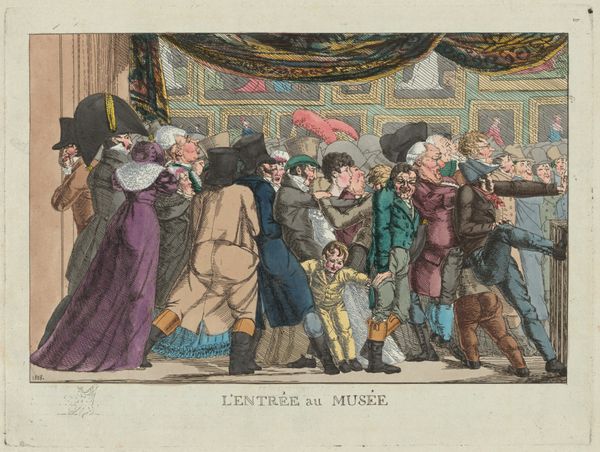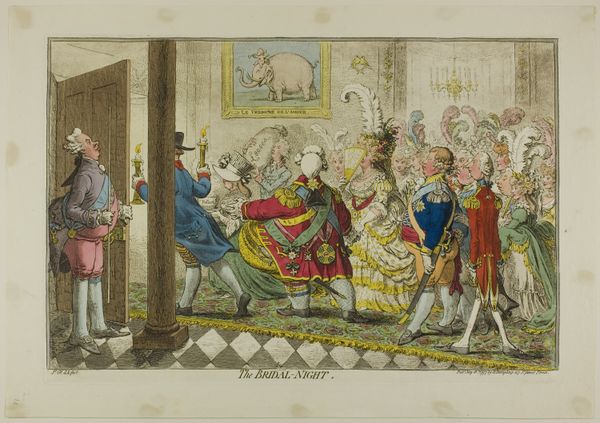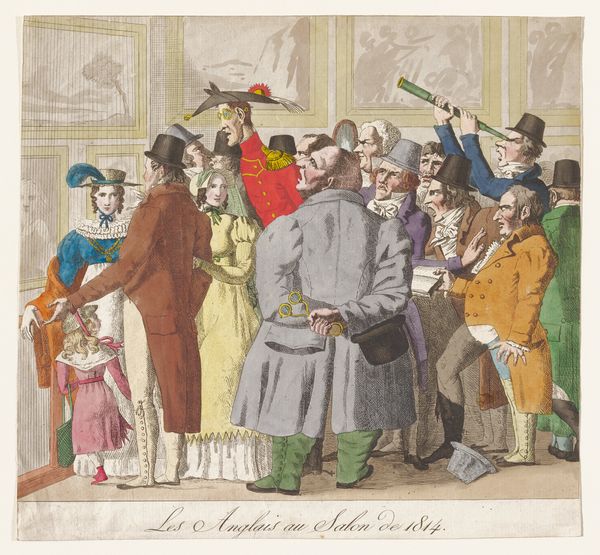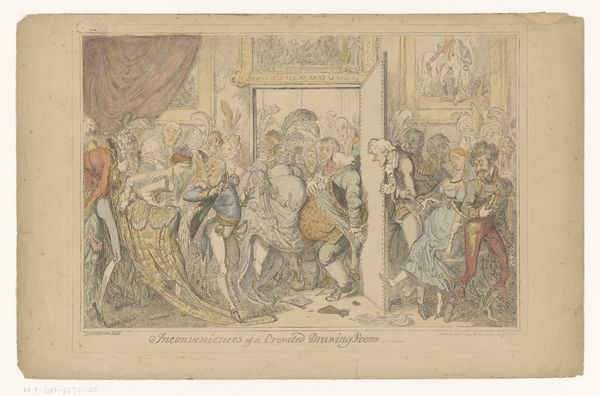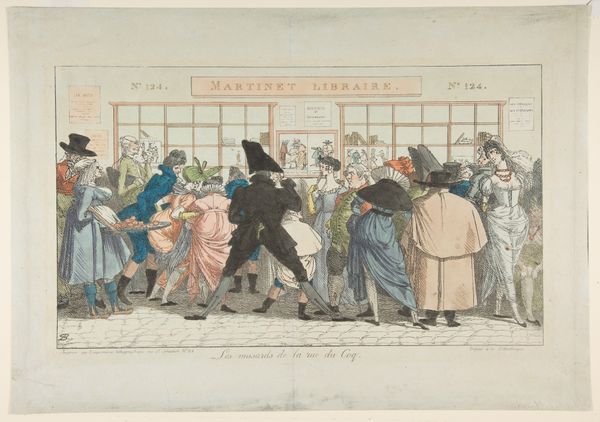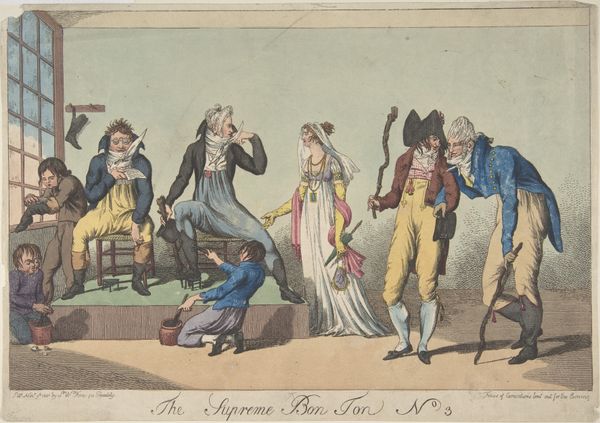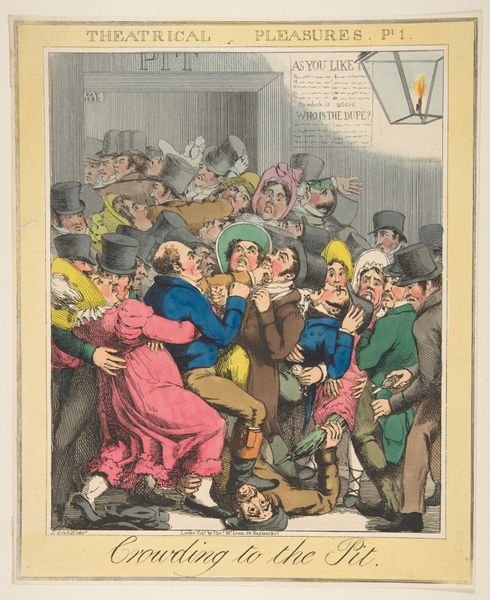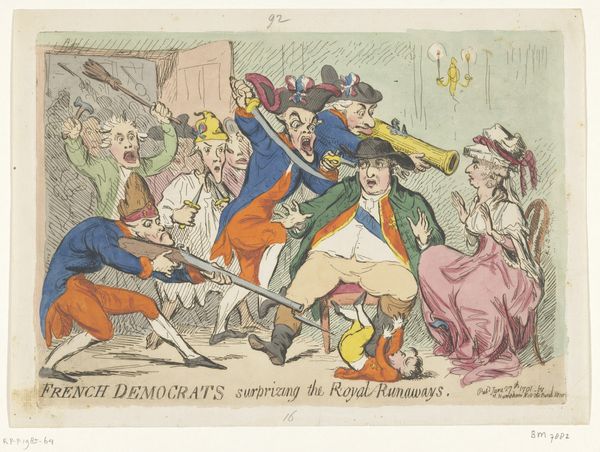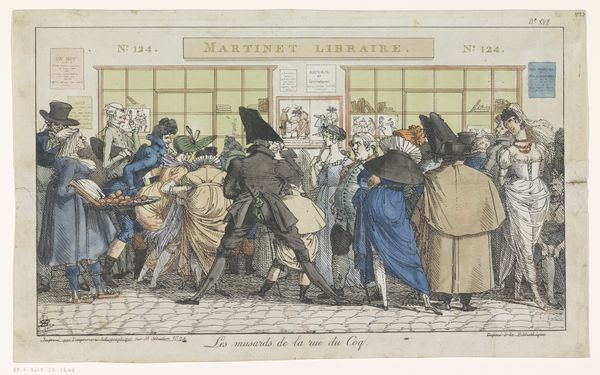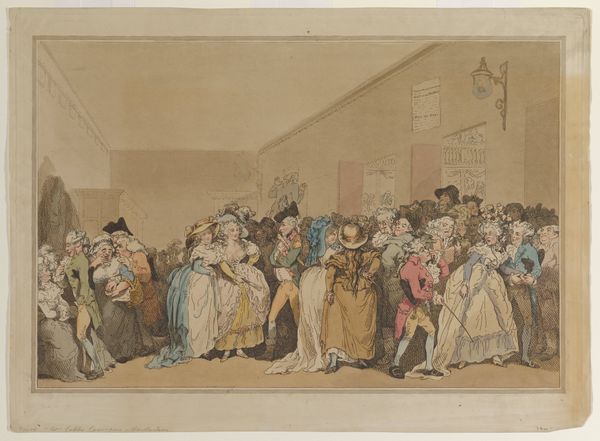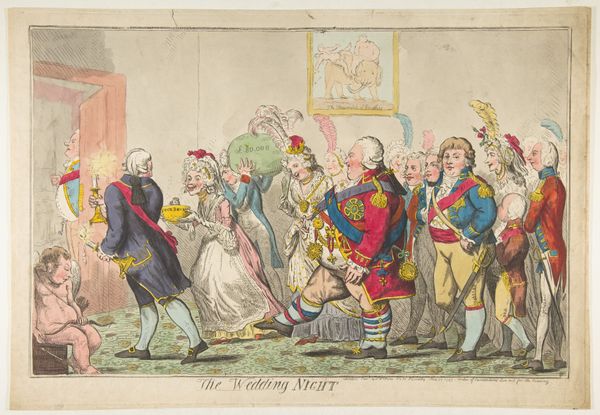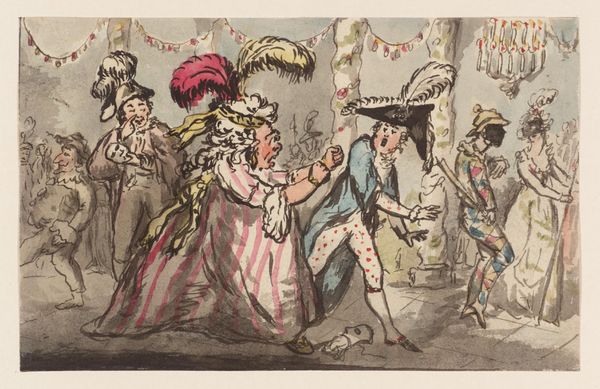
drawing, print
#
drawing
# print
#
caricature
#
child
#
romanticism
#
men
#
cityscape
#
genre-painting
Dimensions: plate: 7 13/16 x 10 1/2 in. (19.8 x 26.7 cm) sheet: 9 3/16 x 12 1/2 in. (23.3 x 31.7 cm)
Copyright: Public Domain
Curator: This is a delightful piece titled "L'Entrée au Musée," which translates to "The Entrance to the Museum." Dating back to 1808, it’s a print drawing crafted by an anonymous artist. Its current home is here with us at The Met. Editor: My first impression? A frenetic energy. It seems like organized chaos, a comical representation of individuals jostling and pushing, eager to enter. Curator: Precisely. The artist uses caricature to emphasize this frenzy. Note the exaggerated features, the wide eyes, and strained expressions. It's less about portraying individuals and more about capturing a sense of the crowd, a collective experience. What are your thoughts on the construction and composition? Editor: Well, let's look at the materials, or what seems implied by them. As a print drawing, its inherent reproducibility would offer a certain accessibility, inviting mass consumption of art world commentary. The lithographic chalk, the various inks used…all elements that can tell us much about art and the consumption habits of 19th-century Paris. The social fabric comes alive through material investigation! Curator: And what of its themes? There’s certainly the spectacle of the museum itself, the rising importance of public art institutions. You notice a strong element of genre-painting in it, of ordinary daily scenes from bourgeois culture becoming art worthy. Editor: But I read so much commentary about the act of viewing embedded into the material act of production. Are the masses really consuming high art, or are they consumed by their drive to be viewed, to perform cultural sophistication? Look at how anonymous the artist is–this absence directs our analysis to process over personality, to consider whose interests such pieces served! Curator: Your read, while fascinating, might lose track of more immediate formalism within the structure and arrangement of the piece itself. The architecture and dress code present clear visual hierarchies which shape that perceived social commentary. And it reflects more the broader Romantic aesthetic then emerging within other artworks from its time, wouldn't you argue? Editor: Romanticism emerges from specific sites of production, shaped through material availability. We should acknowledge the unseen hands, and think beyond what it explicitly "represents," towards broader cultural production. That piece certainly has its hands full...or its unseen artistic labor! Curator: Perhaps. But one could simply value its formal impact. It offers, above all else, a moment to observe society grappling with culture, both literally and figuratively pushing their way in. Editor: Yes...and it allows us to critically look back through it. To excavate meaning, production by production!
Comments
No comments
Be the first to comment and join the conversation on the ultimate creative platform.
